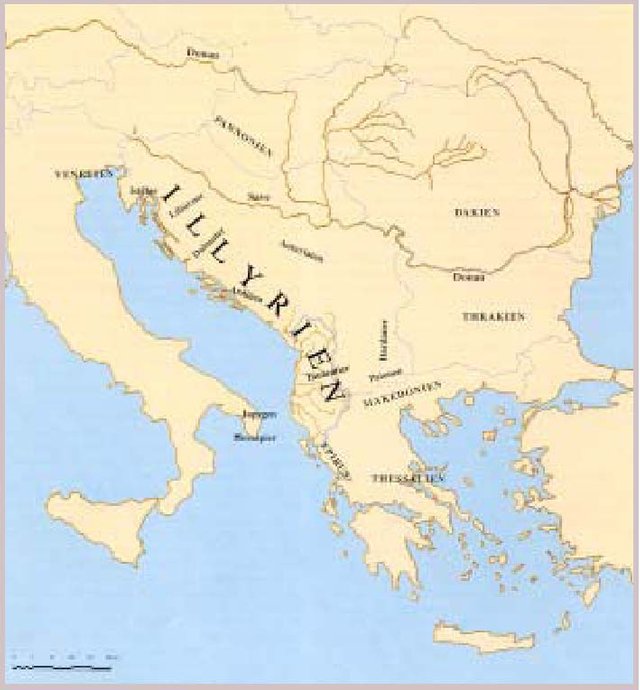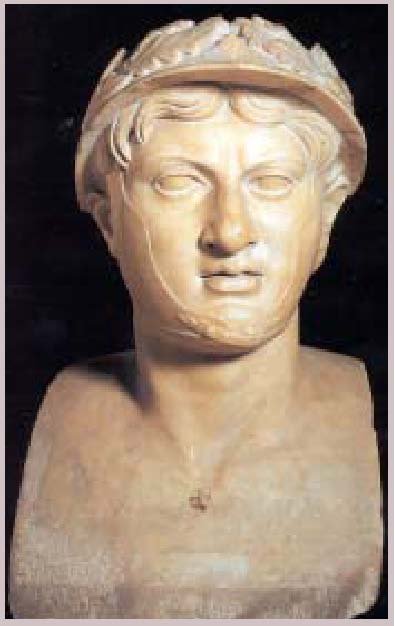HISTORY OF ALBANIA; ANTIQUITY - THE ILLYRIANS (PART 1)
Written sources from antiquity state that the western Balkan regions were inhabited by the Illyrians since ancient times, and were one of the largest populations on the peninsula. These facts can also be supported by archaeological, linguistic and anthropologic studies and findings, and validate that the Illyrians were an ancient population, native to the territory and developed over a long period of time through both the bronze and iron ages (the second millennium B.C.).
References to Illyrian tribes can be found in the earliest works of Hellenic literature in both Homer and Hesiod’s poems. Interest about Illyria and the Illyrians grew among Hellenic writers soon after the first Hellenic colonies settled along the eastern Adriatic coast in Dyrrachium, Apollonia and Orichon during the 7th to 6th centuries B.C. The close links that these cities kept with the metropolis and the continuous visits by both Greek travellers and merchants in order to become acquainted and make deals in both rich minerals and agricultural and dairy products of Illyria, helped the ancient Greek world acquire full and exact knowledge of Illyrians, and such firm data can be easily found throughout the well-known works of historians of the ancient world, such as Herodotus and particularly, Thucydides.
Records of Illyrian history were kept in abundance from the 4th to 2nd centuries B.C. Among them, Polybius’ works give key and precise data about the Illyrian Kingdom. Also of note are the works of Appian and Strabo.
In contrast, historic records during the first centuries A.D. appear to be very limited, whereas lit-erary works by ancient and Byzan¬tine authors grow in number in the period that follows the 4th to 7th cen¬turies A.D. (which offer many important facts about the history of Illyria during late antiquity).
Ancient and early-recorded sources of the Middle Ages make up a strong foundation for recon-structing the history of the Illyrians and Arbërs. The records appear to Pyrrhus of Epirus, known for his painful Victory as it is called “Victory like Pyrrhus” be fragmentary and somewhat incomplete making it very difficult to compile a thorough reconstruction of the full historic development in the territory of Albania during antiquity. However, if we are to explore and view them thoroughly with the support of archaeological findings, we can in fact reconstruct a fair standpoint of the Illyrian culture.
The Illyrians inhabited a large territory, whose northern fringes went as far as Danube’s branches (Sava and Drava), while southward covering the bulk of prehistoric Epirus and extending up to Ambracia Bay (Preveza). Its eastern boundaries went as far as the Morava and Vardar rivers, while in the west the Adriatic and Ionian coasts. A few Illyrian tribes like Mesapsa and Japygs were situated in Southern Italy.

Map of the Illyria
The geographical position of Illyria seems to have played a key role in their economic, social and political development for the simple reason that they were much closer to the great ancient civilisations – Hellenic and Roman, and later the early Byzantine.
The first polis was established in Southern Illyria during the 6th to 5th centuries B.C. From a political standpoint, these city-states were hereditary monarchies, thus representatives of the aristocracy of slave owners reigned. The administrative centre was at the city-state, and the dynasty in power was appointed by the king. Within the monarchical framework of the state, the Illyrian cities and surroundings were self-governed in the form com¬munities directed by an executive council that was elected yearly. During the 5th and 4th centuries B.C., the Illyrian state became fully established. The most energetic king was Bardhyl who conquered and subdued the Macedonians, and in 359 B.C. he dared to challenge Philip II of Macedonia in order to restore the eastern borders. Under the rule of King Glaukia, the Illyrian state continued to strengthen rapidly. In 355 B.C. war broke out against Alexander of Macedonia to free the eastern territories and the Illyrians entered in alliance with Epirus by bringing to power Pyrrhus of Epirus (309 B.C.).

Pyrrhus of Epirus, known
for his painful Victory as it
is called “Victory like Pyrrhus”
At this time, Dyrrhachium joined the Illyrian state, and Apollonia was liberated from Macedonian subjugation. Glaukia’s successors — Monun and Mytyl — strengthened the Illyrian state economically and minted bronze and sil¬ver coins. Soon after the middle of the 3rd century B.C, under the reign of Pleurat and Agron, the Illyrian state once again began to prosper. In 231 B.C. they defeated Etols and made an alliance with Epirus and Acarnania which would become the most powerful force in the Balkans. For this reason, the alliance gained strength against the hegemonic schemes of Rome in the Adriatic. In the course of two wars against Rome (229 and 218 B.C.), the Illyrian state, led by Queen Teuta, saw defeat twice. Later, under Gent’s reign (186-168 B.C.), the Illyrian state once again restored its anti-Roman policy and joined an alliance with Macedonia and Dardania. During the Battle of Shkodër (168 B.C.), the Illyrian army was defeated and the Illyrian state turned to ruins.
Major issues since the first paragraph.
Any sources of these backed up facts?